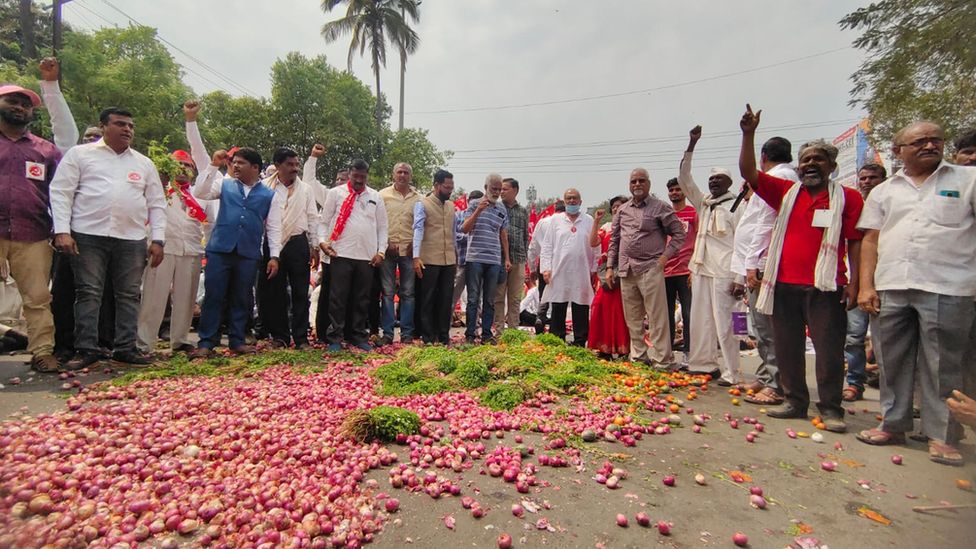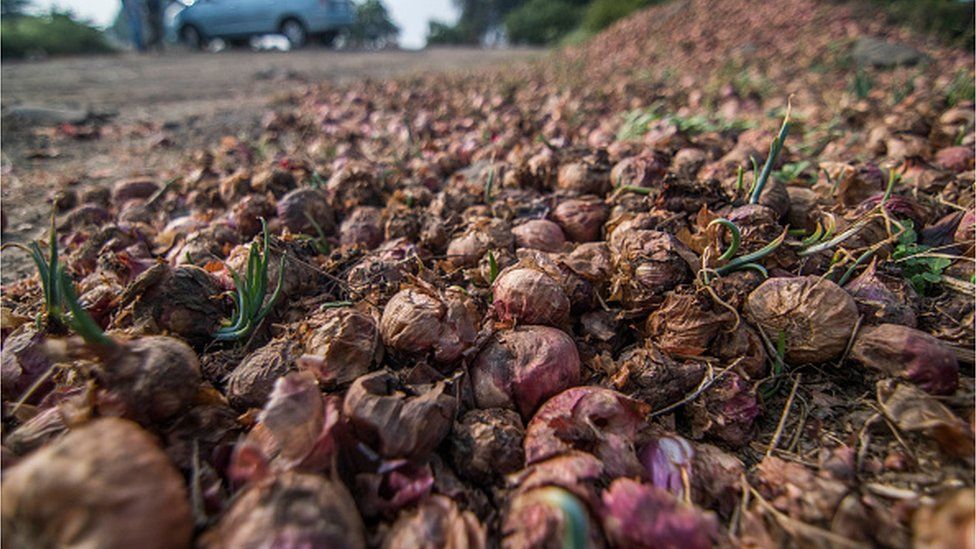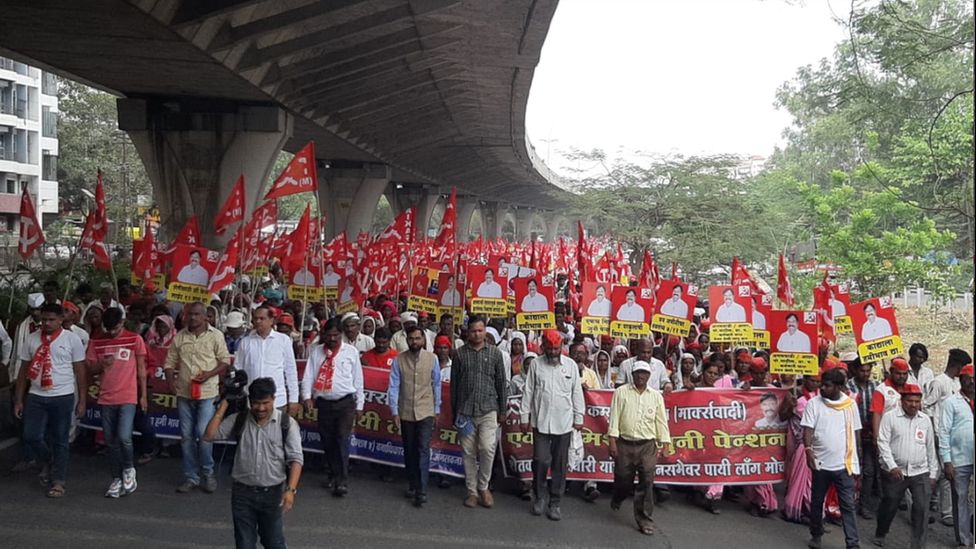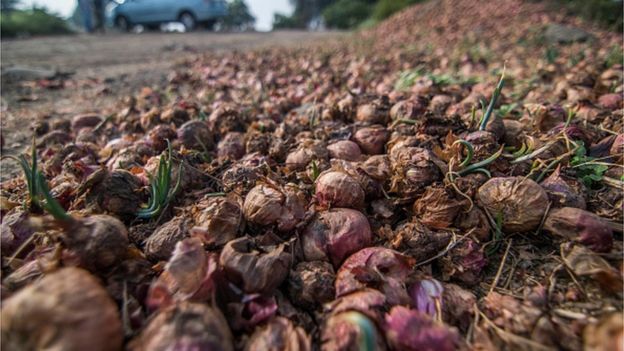
Farmers in the western Indian state of Maharashtra have set out on a 200km (124-mile) march to Mumbai, demanding higher prices for onions. The protests have prompted the authorities to announce some financial relief for onion growers. But farmers have rejected the proposal – and said they would continue their protest. BBC Marathi’s Anagha Pathak reports.
At Namdev Thakare’s vast family farm in Nashik district, rows and rows of onions lie rotting.
The farmer says he doesn’t want to spend money to hire labourers to harvest the onions and take them to market because he can’t recover the costs.
He is among thousands of farmers in Maharashtra who are protesting after onion prices suddenly crashed over the past few weeks. One of them burned his crop in desperation after sending an invitation to the state’s chief minister; others have posted parcels of onions to Prime Minister Narendra Modi in a bid to draw attention.
This is something that occurs almost every other year.
At around 24 million tonnes annually, India is the world’s second-largest producer of onions, behind China. Maharashtra accounts for more than half of this. About 10-15% of the countrywide produce is exported to other countries.

Onion prices in India are highly volatile. The vegetable is a staple part of the cuisine in most Indian states and its perishability means it can’t be stored for too long.
Onions can also be notoriously political – while a glut in supply can make prices fall, plunging thousands of farmers into crisis, a shortage can send prices soaring, sparking consumer anger that has even brought down governments in the past.
Officials say that a major reason for the latest crash in Maharashtra was that demand from the populous northern states was dropping as the states of “Uttar Pradesh, Bihar, Rajasthan are also harvesting onions”.
Shrikant Kuwalekar, a farm expert, says that unexpected weather changes are also having an effect on production and hence prices.
Onions are cultivated during two seasons in India – monsoon and winter. The monsoon crop is usually harvested between late December and early January. These onions have a low shelf life and must reach markets quickly. The winter crop, harvested from mid-March, can be stored for a longer time.
“Last year, there was heavy rainfall in the months of July-August, so farmers delayed their cultivation. This has led to a huge surplus of the onion crop in March, which would otherwise have hit the market in December-January,” Mr Kuwalekar says, adding that things will get worse when the winter harvest also reaches the market in a few weeks.
Farmers in Nashik say they are only getting around 200-400 rupees ($2.43-$4.85; £2-£4) per 100kg of onions in the wholesale market.

Ajit Navale, a farmer leader from Maharashtra, explains the economics of onion farming.
Onion prices, he says, need to stay above 1,200 rupees per 100 kg if the farmer is to make at least 400 rupees of profit.
While wholesale prices are low, retail prices haven’t been affected much. Mr Navale says that only middlemen and traders benefit from the supply glut.
“They buy onions from farmers at a very cheap rate and sell them in cities for higher prices. Ultimately, both farmers and consumers are affected,” he says, adding that it’s “unfortunate” that the government isn’t intervening.
It’s a complaint shared by others. Mr Kuwalekar points out that even though demand for onions is steady, India doesn’t have a proper policy to regulate prices. When prices rise, the government often bans exports, fearing protests at home.
“Sometimes we even have to back out of supply commitments to other countries, which makes us lose our credibility,” he says.
Farmers who eke out a living from one crop season to another say that these policy decisions don’t mean much to them.
“I was supposed to arrange my daughter’s wedding this year and also construct a house. That’s unlikely now. My creditors are demanding money,” says Dagu Khote, who borrowed money to plant onions.
“I will now look for work as a daily wage labourer until the monsoon starts,” he says.
BBC News India is now on YouTube. Click here to subscribe and watch our documentaries, explainers and features.

Read more India stories from the BBC:


